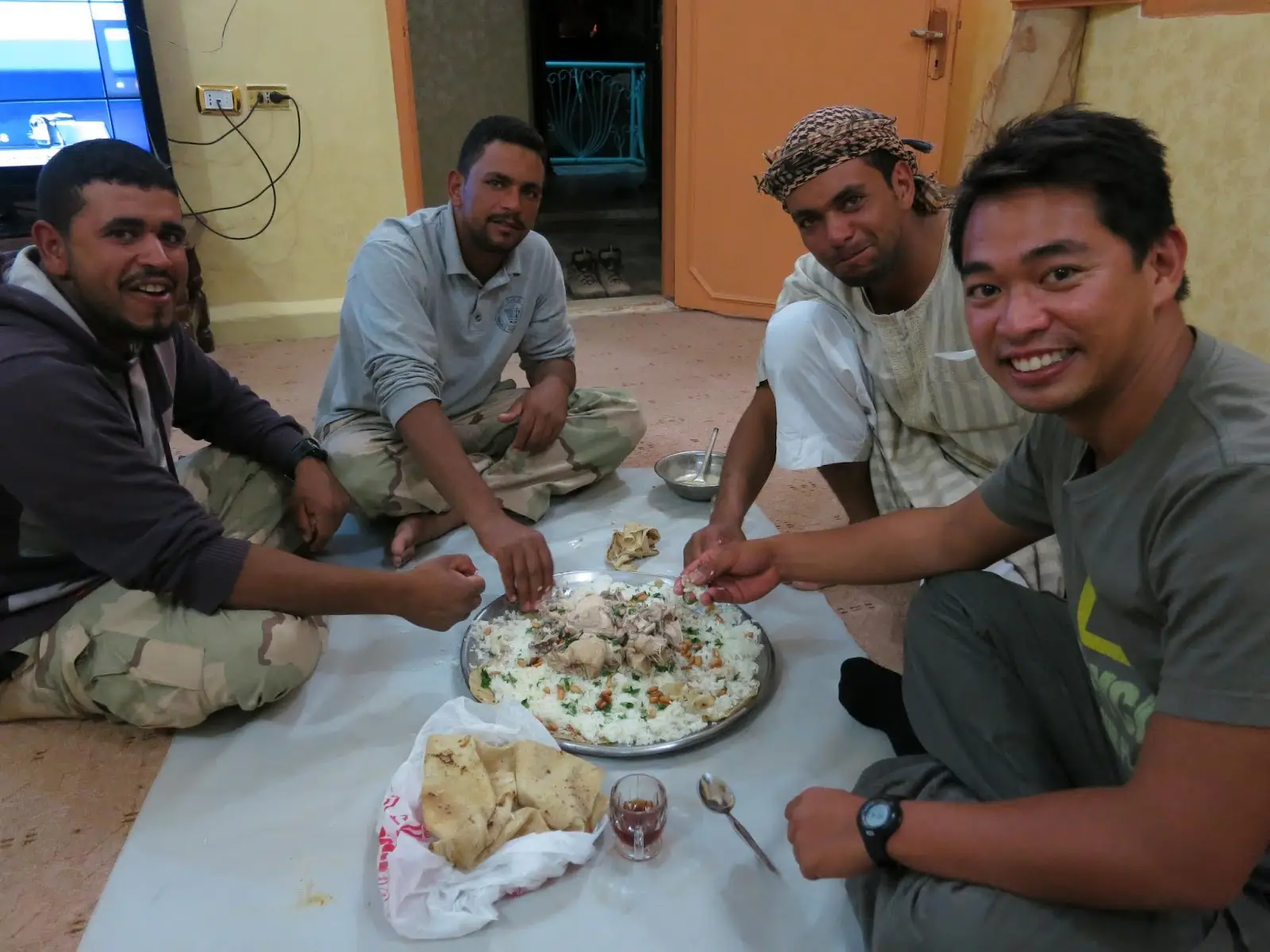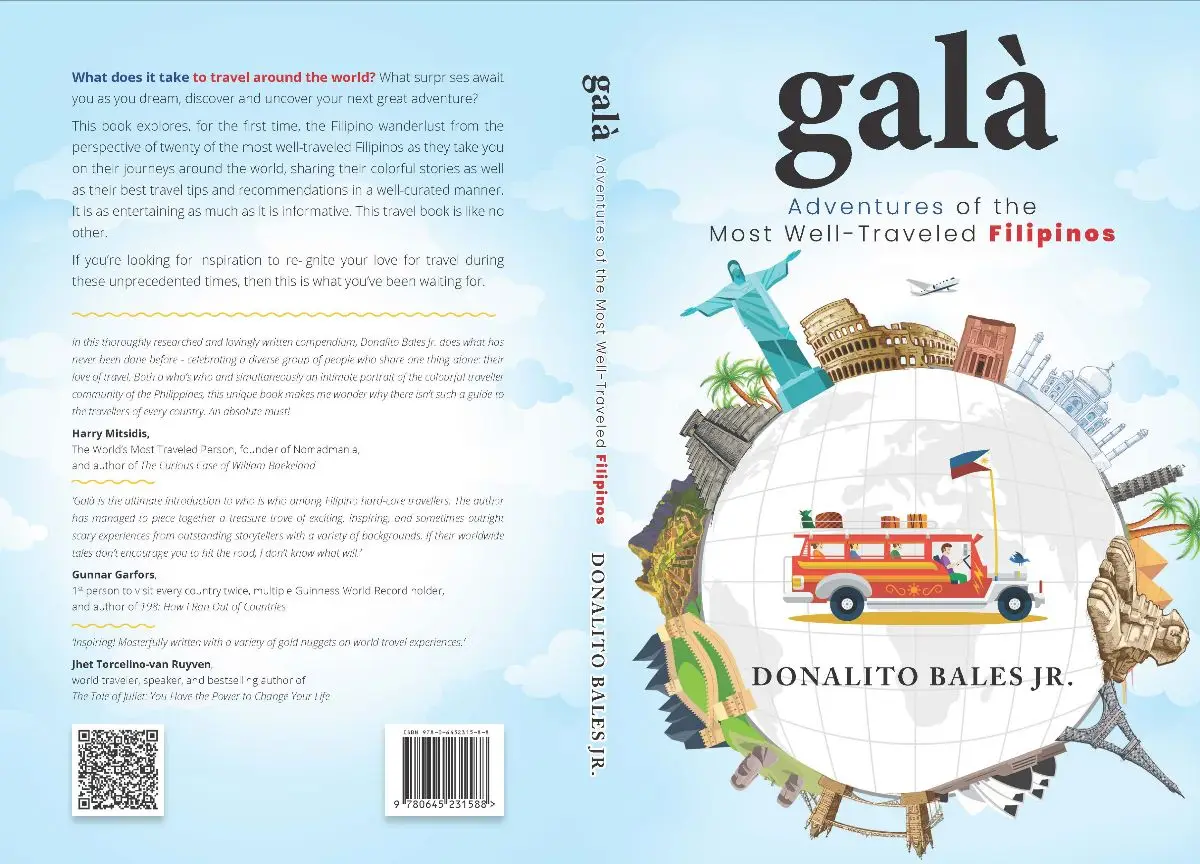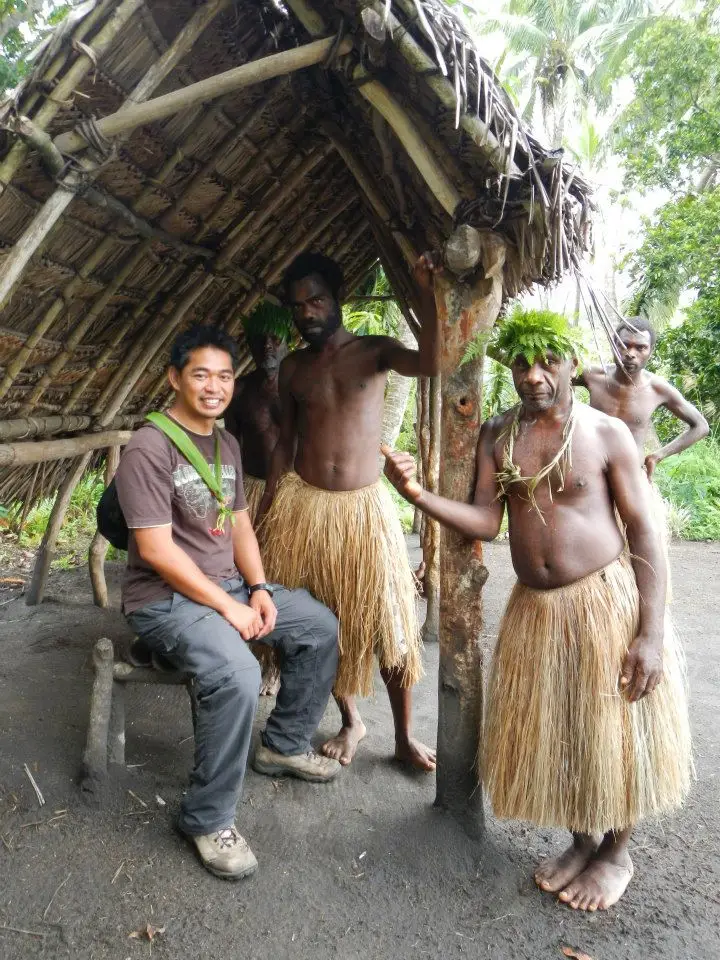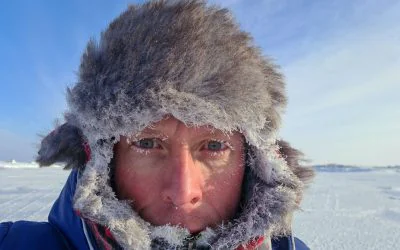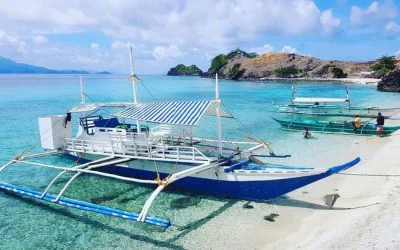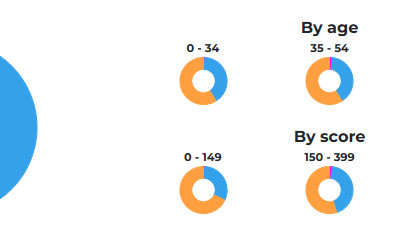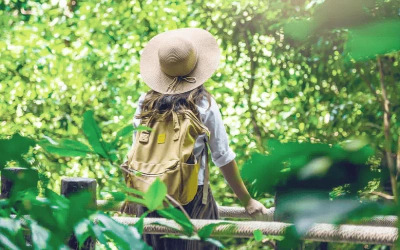Meet Dondon Bales, a member of NomadMania’s Executive Committee who is leading our travel community’s sustainable travel advocacy initiatives. Dondon has an unlikely traveller profile – from humble beginnings in the Philippine countryside, financing his education through scholarship grants, becoming a breadwinner to his family, working as an I.T. project manager, migrating alone overseas to Australia, not having a full driver’s license until the age of 43, never been married, never knowing how to use a DSLR camera.
Nevertheless, he has visited over a hundred countries, authored a travel book, founded a Filipino World Travellers Group, contributed as a panelist and travel writer at conferences, and is emerging as a leader in the area of sustainable travel.
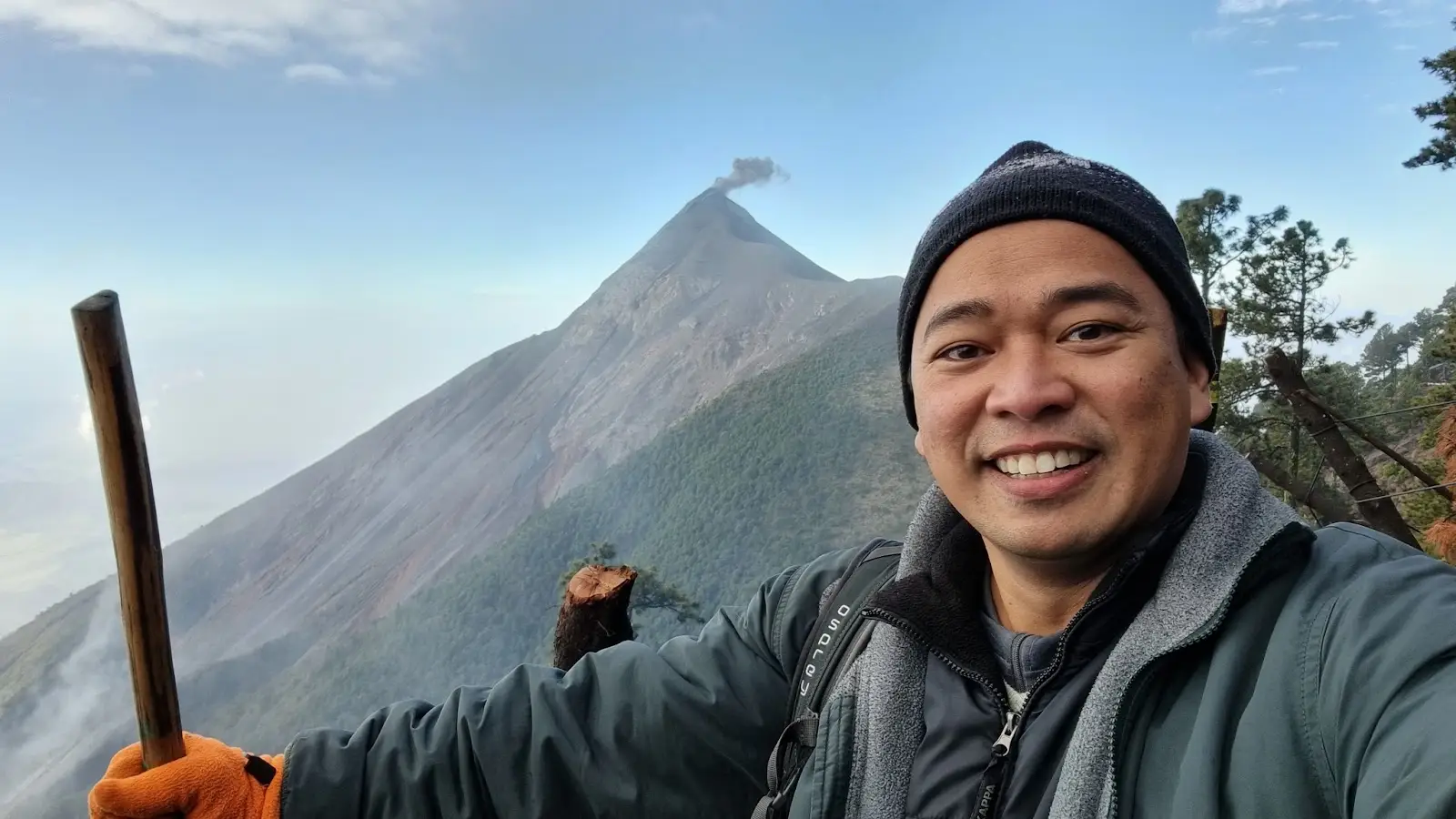
What sparked your interest in world travel?
As a child growing up in Leyte, an island in the Philippines, my perception of the world was very limited to what I saw on TV and films, and what I read in books and the news. I’ve always wondered what it was like “out there” so I started the hobby of collecting stamps (philately) and coins/bills (numismatics), and researched places in the encyclopedia. It was not until I was 16 years old that I had my first overseas trip, which was in Hong Kong as part of a team representing my country in an international computer programming competition.
The second time I went overseas was to the US where I was sent to attend a company training as a 20 year old college graduate from Manila. I remember being so excited on that one month training trip in the US as I’d never experienced living in a first world country before.
I was so grateful I had the opportunity to travel outside the Philippines through work because my family’s financial situation could have never afforded me to do so. I remember a question was asked to our international cohort on who has been to Europe, and I was so embarrassed to find out that out of the entire training class, I was the only one who had never been. So I promised myself, I would get there one day.
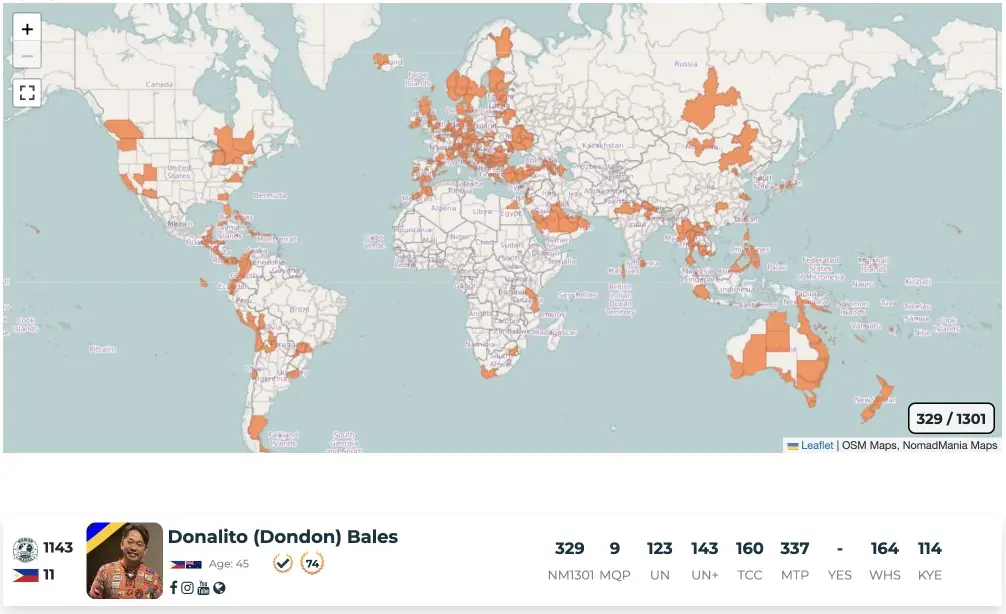
So, the first time I set foot in Europe was in 2006 in Italy and my senses were overwhelmed yet overcome with joy. In 2013, I crossed from Asia to Europe via the Trans-Siberian train and again I was filled with intense emotions. By 2019, I’ve finished visiting all the U.N. countries in Europe.
Ukraine was one of the last European countries I visited and I’m looking forward to visiting again this October 2023 for the NomadMania Awards to get the opportunity to see first-hand how much it has changed as a result of the war, find out how people like me can help, and reconnect with friends living there.
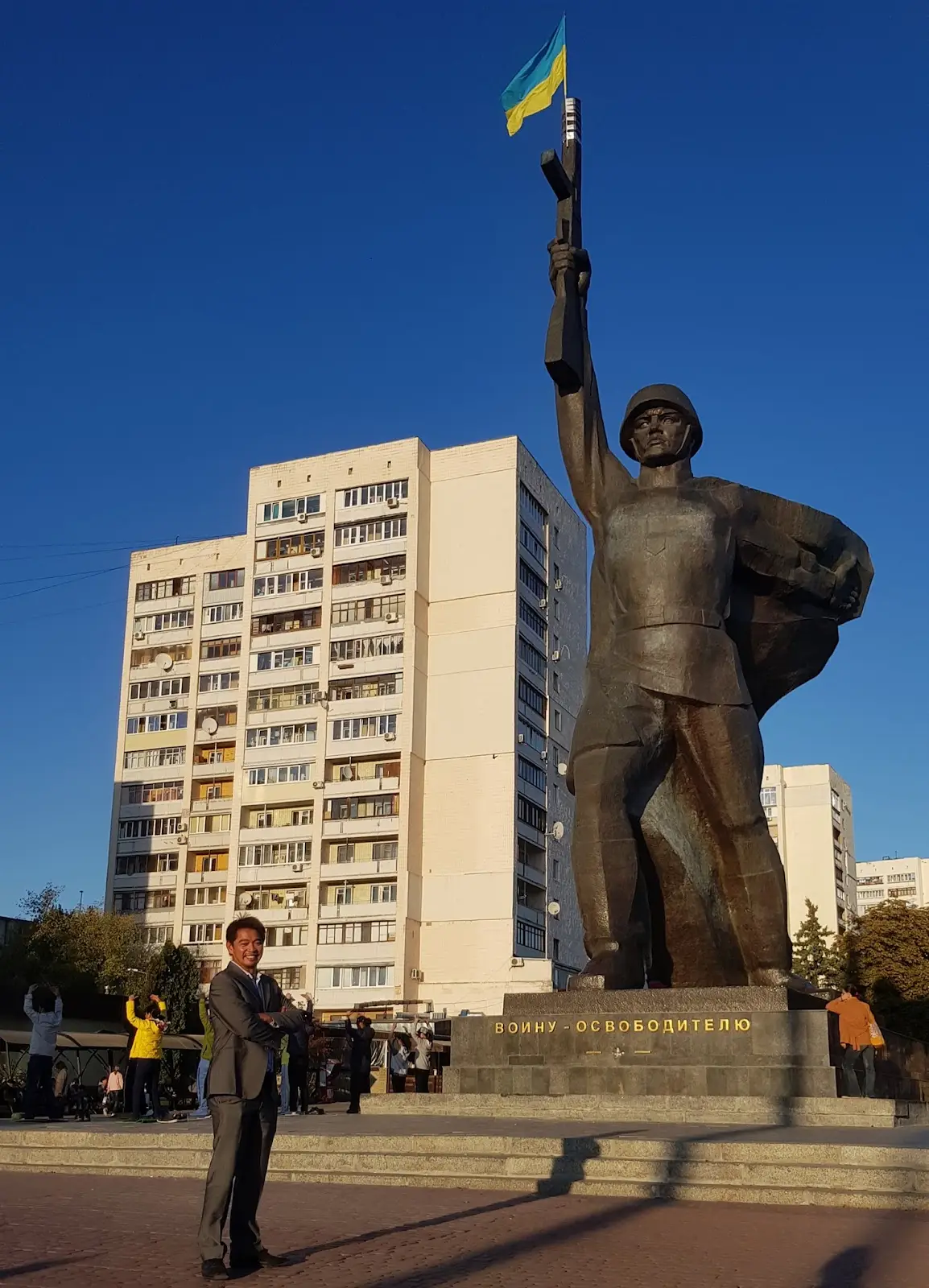
Looking back on what sparked my interest to travel the world extensively, it was having that insatiable curiosity and the fear of missing out (FOMO). Whenever I travel, I look for the novelty in the experience: I want to see awe-inspiring places, I want to taste good food, I want to participate in immersive cultural traditions, and I want to meet locals and hear their interesting stories.
It fascinates me to discover how people in other places and cultures live and how the world’s reality occurs to them, in contrast to my own lived experience. World travel broadens my perspective of humanity and it provides me a glimpse of a thousand lives from every moment and interaction that I have during my trips.
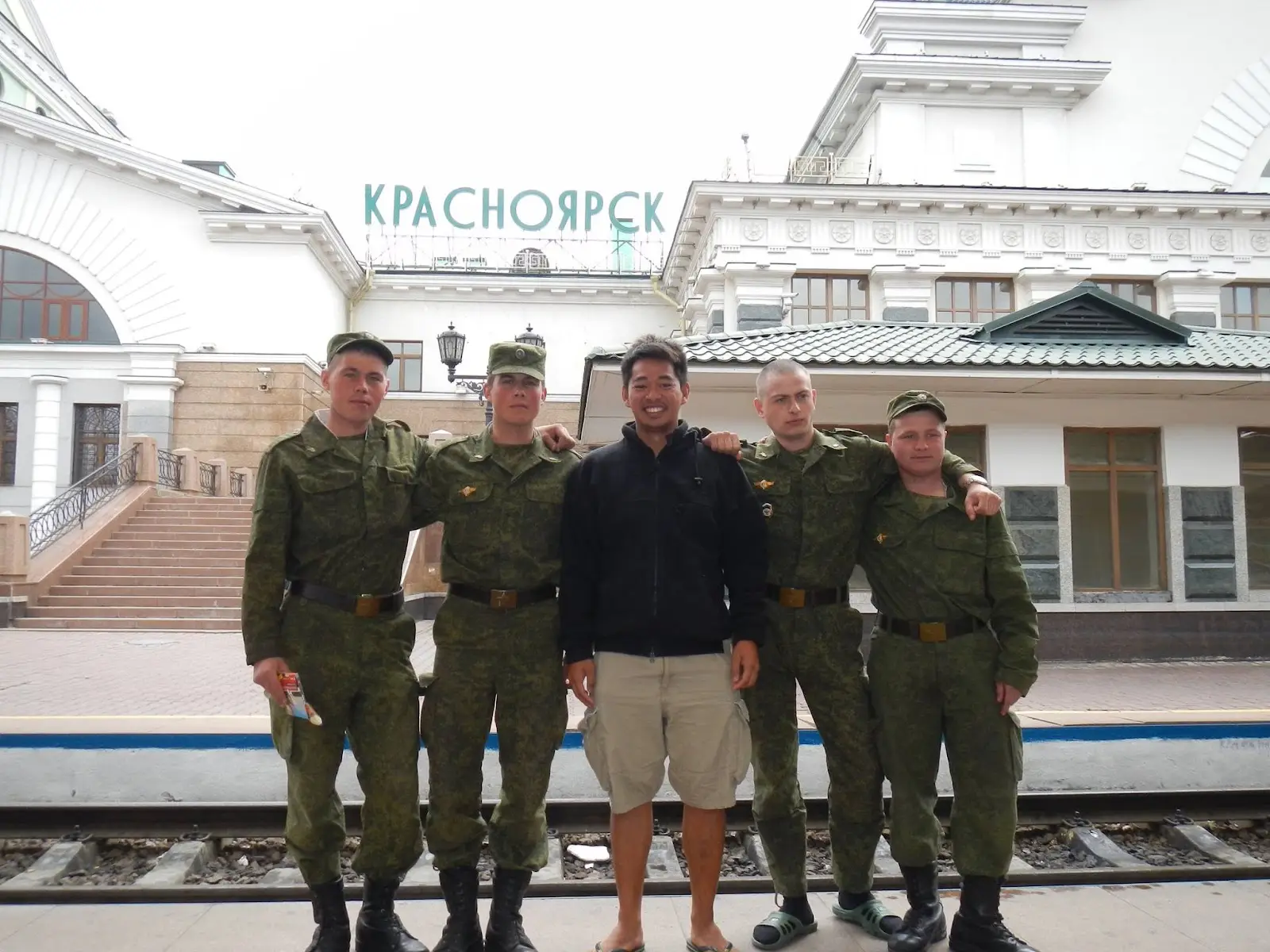
Can you tell us about a specific travel experience that had a profound impact on you and why it was so significant?
Of all my travel experiences, Burning Man is, hands down, at the top of my list and this excerpt from my travel book would best summarize it: “Imagine living for nine days in a temporary city in a desert with over 75,000 other people; where creativity and innovation live through the art cars, costumes, and playa art; where you can wear as much or as little as you want; where the only thing money can buy is ice and coffee; where you’re off the grid, as there’s almost no reception; where you get to design how you want to participate in life through radical rituals you choose; it’s an immersive experience where you find comfort and joy as you discover your Playa name in the process. These words have significance to Burners like me: Sandstorms. Bicycles. LED lights. Temple. Mutant Vehicles. Robot Heart. Mayan Warrior. Porta-Potties. Trash Fence. Tutu Tuesday. Human Carcass Wash. Decompression.”
I wrote an interesting online article about it and referred to it as a mainstream example of sustainability in practice in the journal article I contributed to the 2023 Conference for Global Transformation. The 10 Burning Man principles align with the philosophy of purposeful travel, including radical inclusion, gifting, decommodification, radical self-reliance, radical self-expression, communal effort, civic responsibility, leaving no trace, participation, and immediacy. It left such an impression on me that I use it as a model for my commitment to the world to be a champion in creating a world of belonging through purposeful travel.
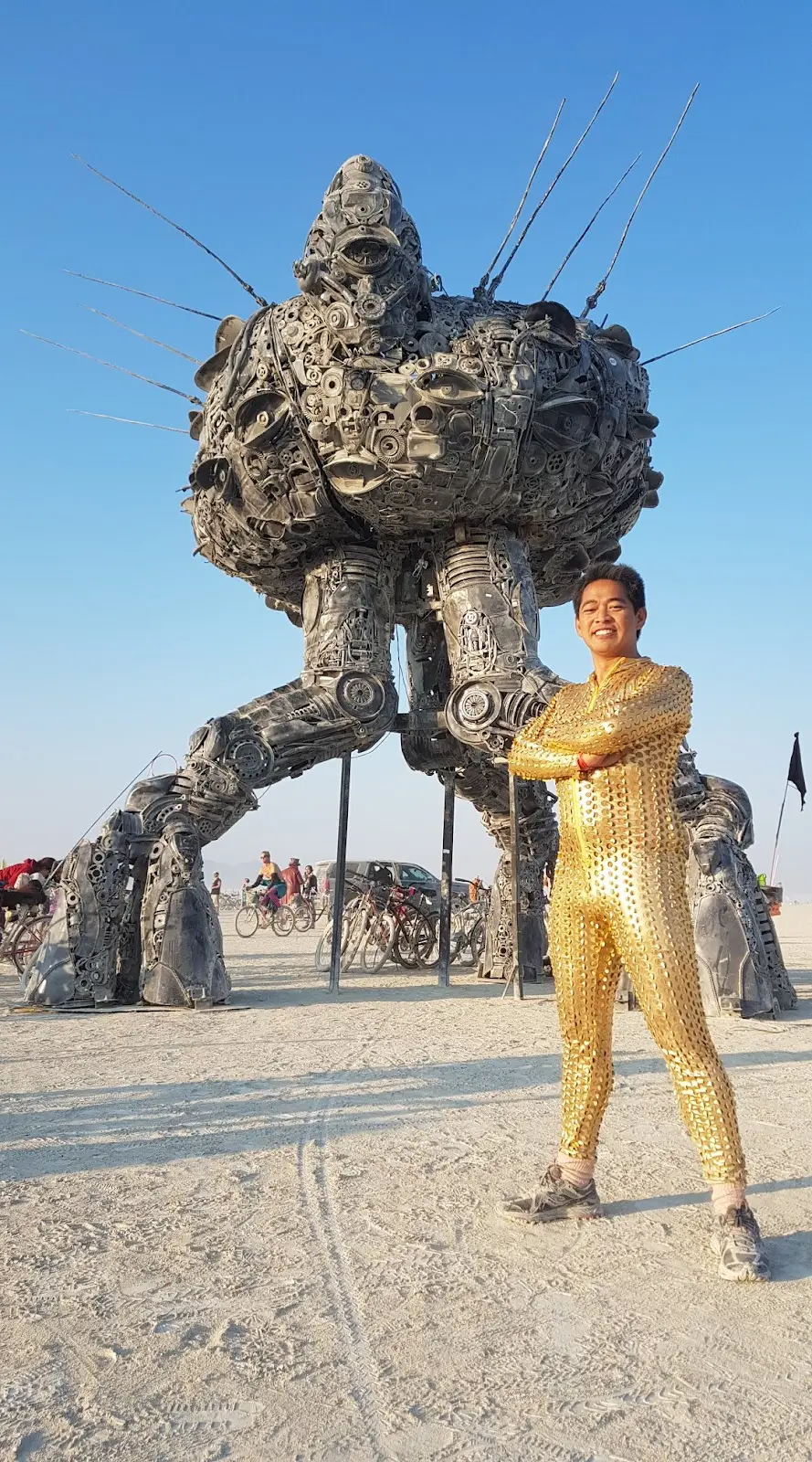
What is your travel style?
I’m very flexible with my travel style based on the circumstances I’m in at the time since I work full time in the corporate world as an I.T. Program and Project Manager. Back when I was working as an employee, I got 4 weeks of annual leave which I used for traveling mostly during the Christmas holidays. In one instance, I took a sabbatical leave for close to two years which allowed me to travel full time.
When I was in between jobs, I would take half a year trips traveling full time. Now that I work for myself, I am constrained by when I start and finish my project contracts. If I have short breaks, I tend to travel fast and I’d book packaged tours as I don’t have a lot of time in my hands. For long breaks, I have more flexibility for DIY (Do-it-Yourself) journeys and I tend to adopt slow travel and choose my own adventure.
To illustrate my travel style, here’s an example of how I traveled for 6 months from December 2021 to May 2022 where I got to 30 countries and territories. I took two cruise ship trips and two flights from the US to visit a number of Caribbean countries. Then I had to recover for half a month from COVID-19 after visiting DisneyWorld for New Year’s Eve.
I then traveled for 3 weeks to 5 countries in Central America before heading off to the Middle East where I visited 5 GCC countries in a month, including checking out the Dubai World Expo. I was traveling around Central America half the time with a friend, crossing the land borders, and mostly staying at accommodations from airbnb/booking.com while hiring local drivers to get around where we wanted to go. I also got to travel alone in Guatemala, stayed in hostel dorms on some occasions, and booked an overnight hiking trip to see an active volcano up close.
I traveled alone in the GCC countries and stayed mostly in hotels and apartments from booking.com. I went via hired drivers in Al-Ula, Edge of the World, mountain/coastal road trips from Muscat, Manama outskirts. I was fortunate to meet up with Filipino world travellers who were based in Riyadh, Kuwait City, Dubai and Abu Dhabi and they showed me around their cities.
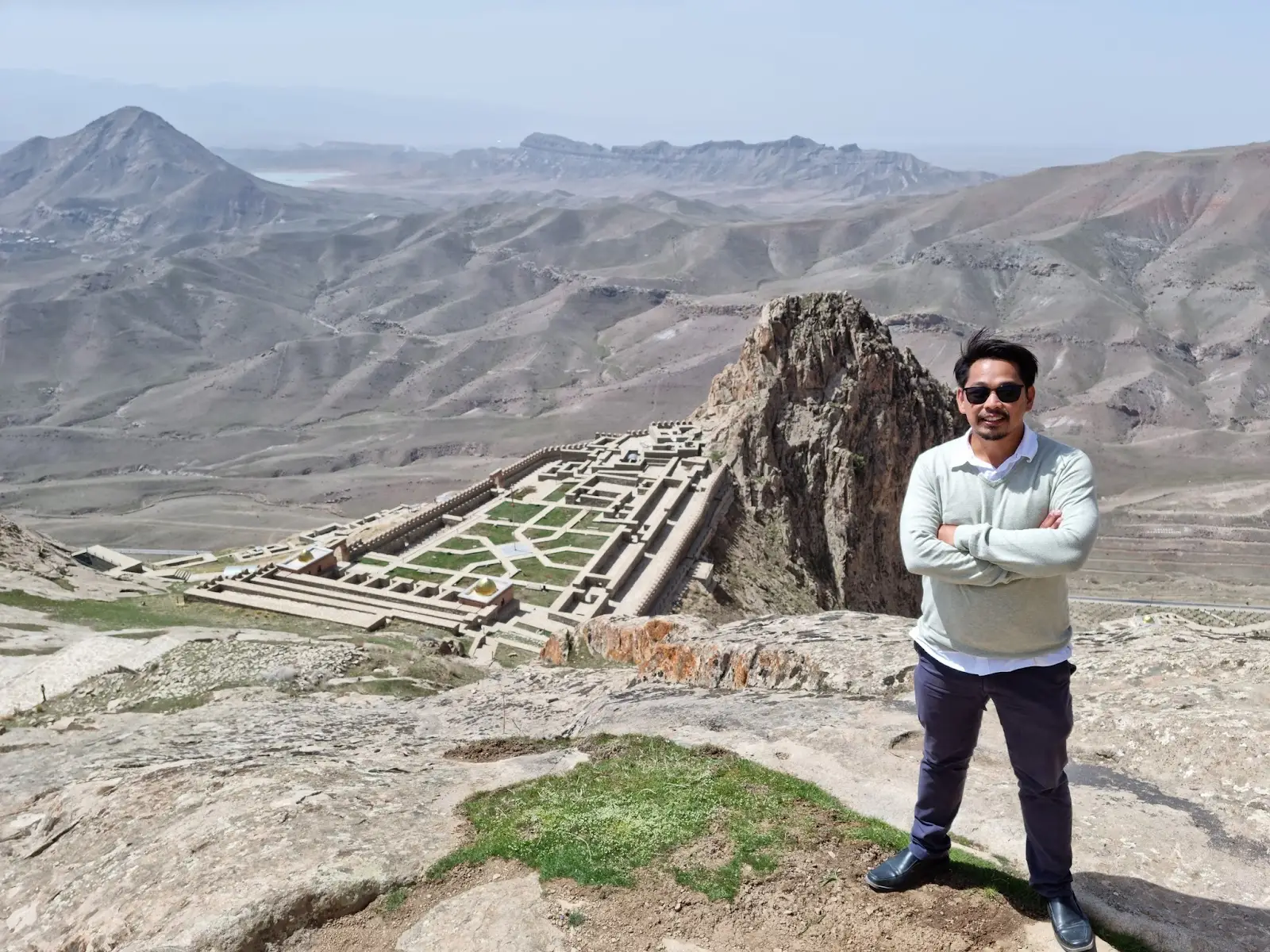
From the Middle East, I went to Azerbaijan with a friend and we crossed the border from Nakhchivan towards Iğdır, Turkey where I got to see Mount Ararat for the first time. We then flew to Ankara and then eventually headed to Cappadocia by bus. After that, I traveled the next month on my own and headed to Denizli, Selçuk, Kuşadası, Izmir, Bergama, Çanakkale, Eskisehir, Bursa, and finally Istanbul which I’ve visited before. During this time, I was using buses, trains, taxis, and boats to get around and I stayed in rented apartments, hotels, and through Couchsurfing hosts in 3 cities.
So my travel style is a little bit of a mixed bag of everything, from budget to luxury, from tours to DIY, fast to slow, as I consider myself an independent world traveler who loves a bit of variety and novelty in my adventures. I’m a country counter but not a country chaser, as I’d like to take my own time to travel around the world and not feel like I’m in a race. And part of “soaking it all in” is taking lots and lots of photos for my personal indulgence. That’s how I normally travel.
What would you consider the highlights of the travel book you wrote?
I remember sharing the early manuscript of my book “Galà: Adventures of the Most Well-Traveled Filipinos” to Harry Mitisidis and Gunnar Garfors so they can provide their testimonials for the back cover. It’s essentially a travel compendium anthology based on the collective experiences of 20 of the most well-traveled Filipinos. NomadMania was a key resource that helped me in the process of finding the people to be featured in the book, using the website’s ranking system by country feature.
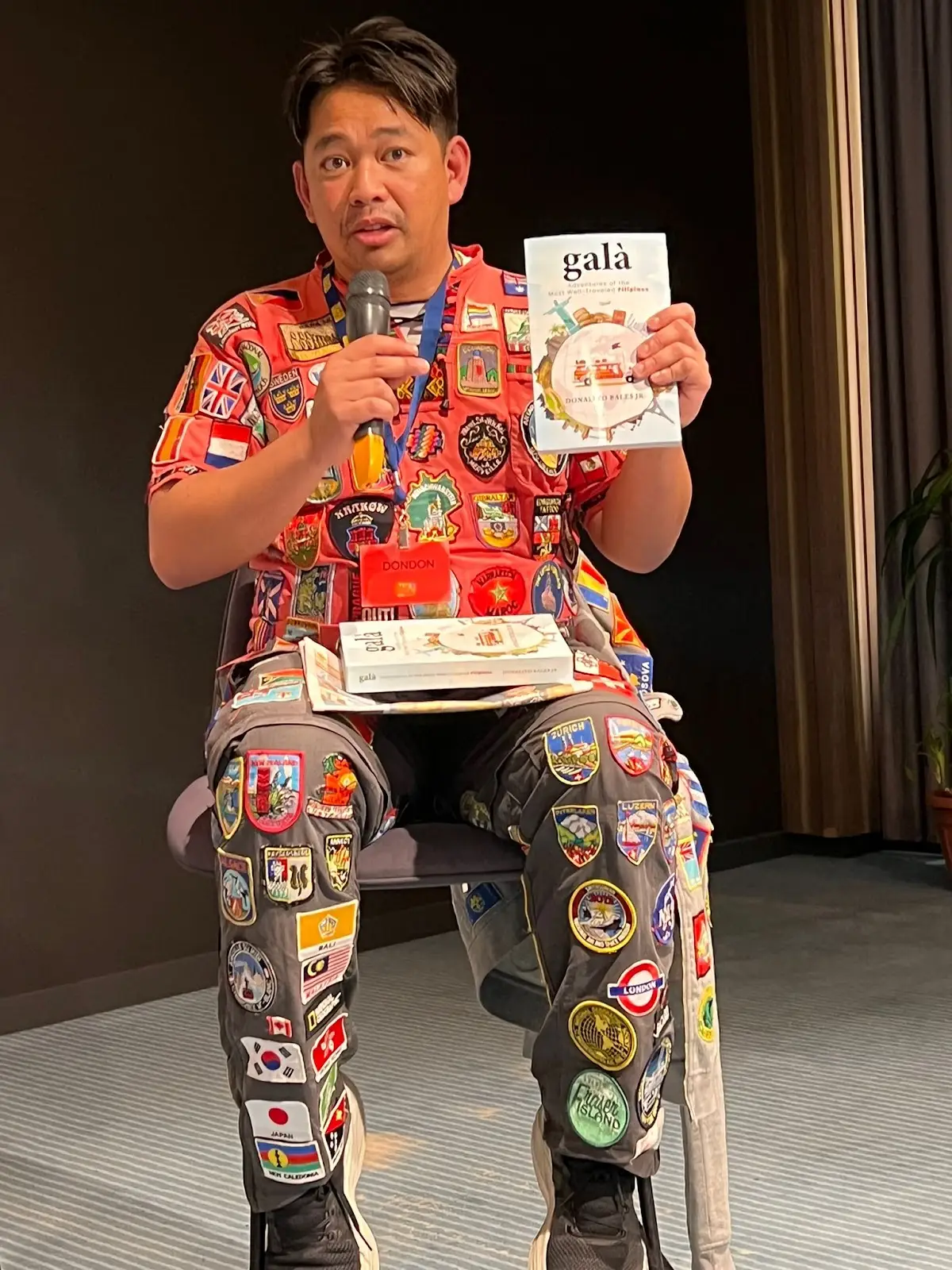
The 399-page book is divided into four major parts:
- Traveller Profiles;
- Travel Stories;
- Travel Bucket List;
- Travel Advice.
People love that they don’t need to read the book sequentially, as they can browse back and forth, as well as flip straight to the part that fits their needs. If they want to be inspired by the lives of world travellers, they can go to the profiles. They can choose to be entertained by the short travel stories.
They can go to the Travel Bucket List to give them some ideas for future trips. They can learn helpful travel tips based on the group’s shared wisdom. To illustrate an example, under the Travel Bucket List is a section of our Favorite World Sporting Events, of which the Olympic Games is one of them so it contains a short anecdote of my personal experience during the London Olympics.
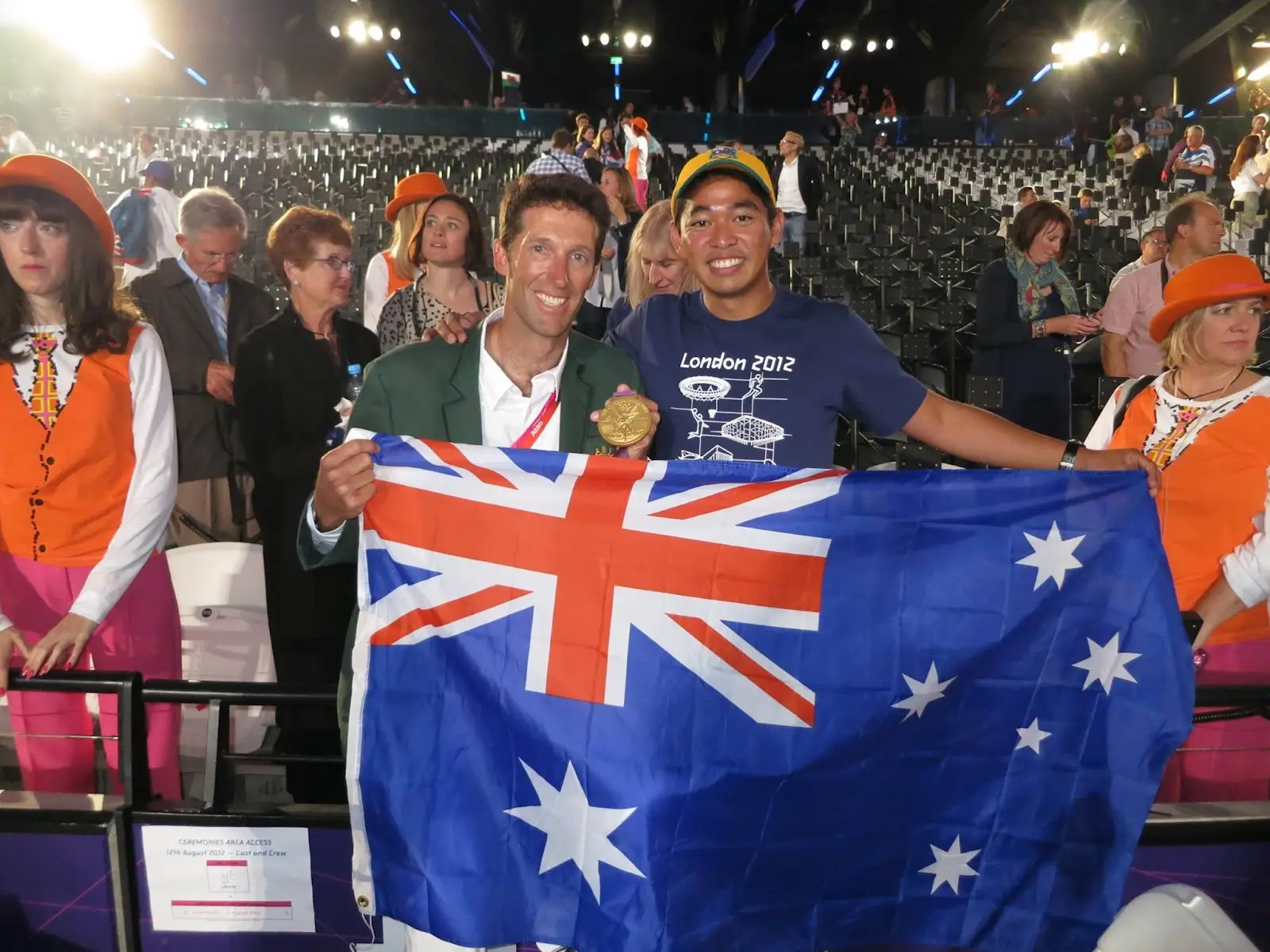
The book is a bit of an “organized chaos”, much like traveling in the real world, so I invite the readers to use it as they see fit on how it can best serve them. Lastly, a key highlight is that every page of the book has a famous travel quote that has been carefully curated to emphasize the content of that page!
The behind-the-scenes of how and why this book came to be is available in this backstory accessible via the QR code at the back of the book.
How do you maintain a sense of curiosity and enthusiasm for new experiences, even after visiting numerous countries?
Amazing travel is like amazing sex. The more you have, the more you crave.
I have been to 160 countries and territories based on the Travelers’ Century Club list which I’ve used as a reference ever since I started counting my visits. Knowing that I’ve still got a long way to go keeps the travel passion flame burning in eager anticipation of future possibilities. Counting countries gamifies the aspiration which makes it fun. As Susan Sontag puts it, “I haven’t been everywhere, but it’s on my list.” I have two chapters in my travel book dedicated to Travel Bucket List with themes on favorite places and travel experiences.
It could take me a lifetime to tick all those off. I do maintain my own personal bucket list of places to visit which includes sites where I can see the Aurora Borealis, Greenland, Tibet, Tahiti, Cook Island, and Lord Howe island. I am a festival aficionado so I don’t think I’ll ever get tired of going to events such as Burning Man in Nevada, Confest in Australia, Carnival in Rio, Tomatina in Spain, Full Moon Party in Koh Phangan, and World Expos because every visit is unique in itself.
I’m a risk-taker and thrill-seeker at heart: I’ve done bungee jumping and skydiving in Queenstown, great white shark cage diving in Gansbaai, abseiling in Bled, ziplining in the Laos jungle to see gibbons, flying in a glider in Hawaii, mountain biking in the Death Road, running with the bulls in Pamplona, and trekking to the crater of Mount Yasur active volcano. Perhaps the craziest thing I’ve done was sitting on a boulder suspended above an almost thousand meter deep abyss with no form of safety net at all! Looking for the next adrenaline rush drives me to seek more adventures.
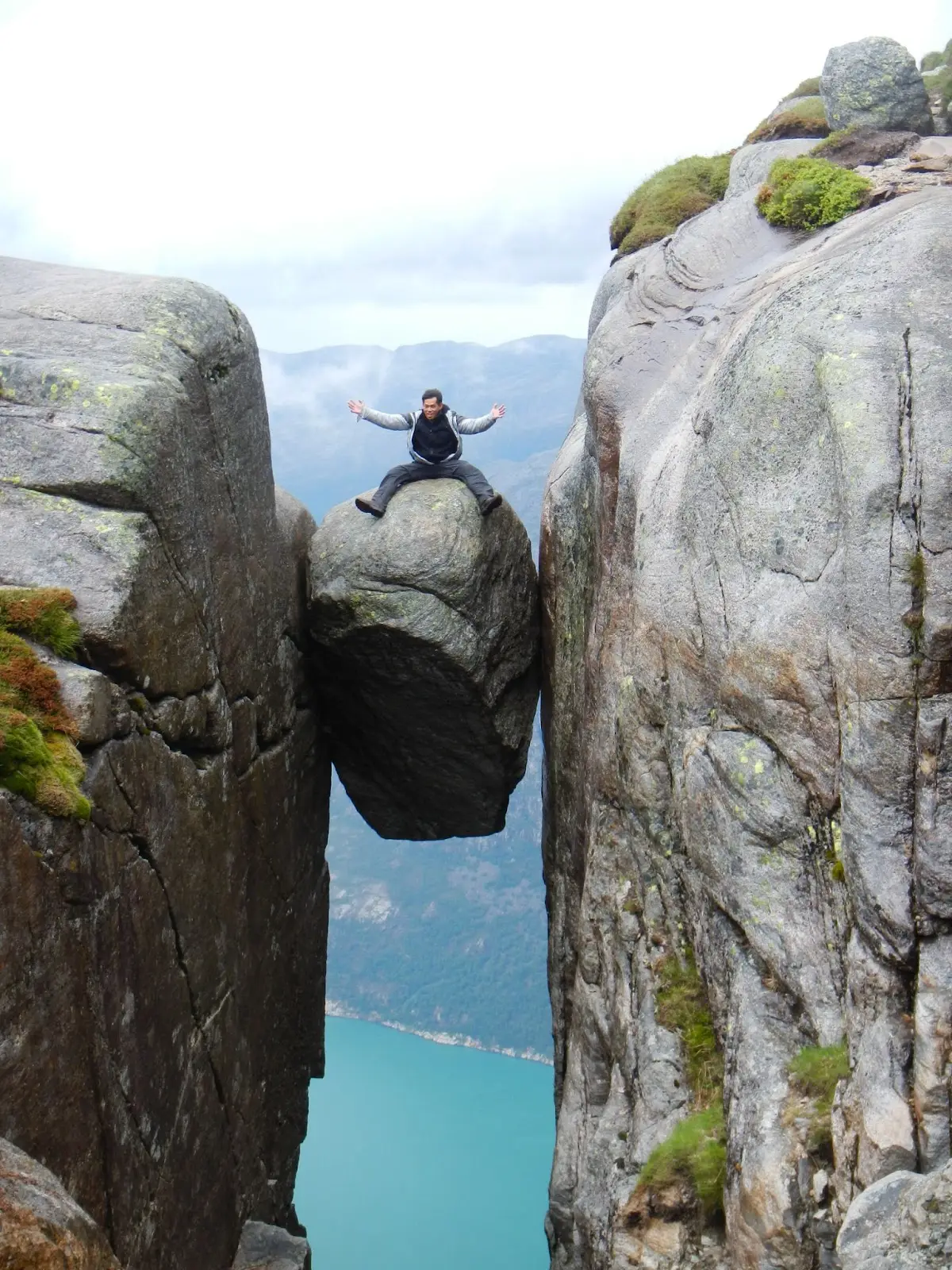
I used to be someone who wanted to experience “all of it” for fear of missing out (FOMO), until I realised I can’t really experience everything everywhere all at once. As the saying goes, “You can’t have your cake, and eat it too.” I’ve started to accept the joy of missing out (JOMO) so as to allow space for future enjoyment. As an example, given I’ve lived in the Philippines for most of my life, I re-imagine discovering the country newly whenever I come for a visit from Australia. At the start of 2023, I went to new places near my hometown like Moalboal, Siquijor, and Dumaguete and I got to see the Sinulog Festival in Cebu for the first time!
Finally, there’s so much beauty in our world – from natural landscapes to the various species of flora and fauna.
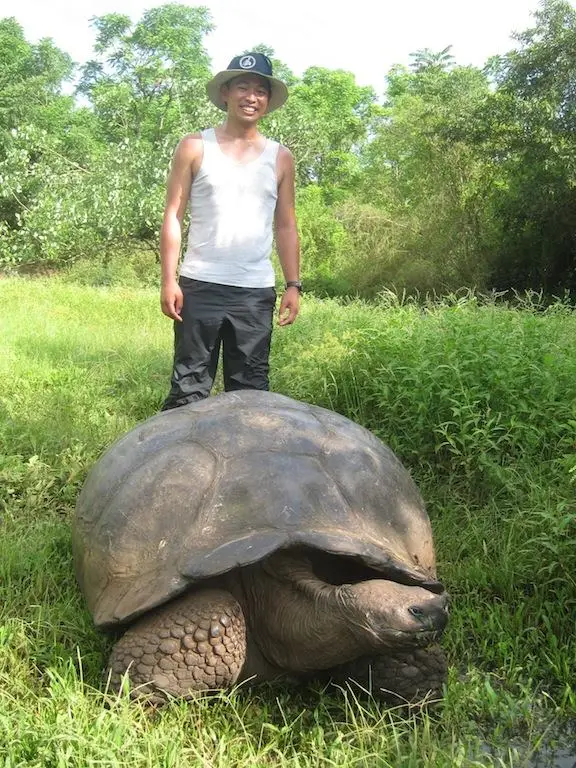
What strategies do you employ to connect with locals and immerse yourself in the local culture when you travel?
I would do the day-to-day things that are relatable such as buying in the market, dining at the local eateries, getting a haircut, hanging out at the plaza, shopping at the mall, praying at the place of worship, or partying at the nightclub. As the saying goes, “When in Rome, Do as the Romans Do”.
It’s actually very helpful to have local contacts of the place that I’m visiting and that’s why groups such as JCI, Couchsurfing, and Every Passport Stamp are important to establish connections to organize meet-ups or get hosted to stay. Couchsurfing Meet-ups and Hang-outs features are great ways to connect with locals and participate in events like language exchange sessions where locals are keen to practice conversational English with me. I’ve met locals in places who don’t speak English, and we still manage to share meals and have conversations through the help of google translate on our phones.
I was very fortunate that a friend from JCI Catalonia invited me to join the training session of his human towers team during my visit to Tarragona, Spain. This was such a rewarding behind-the-scenes experience on top of watching the actual competition, which would not have been possible if I didn’t know anyone from there.
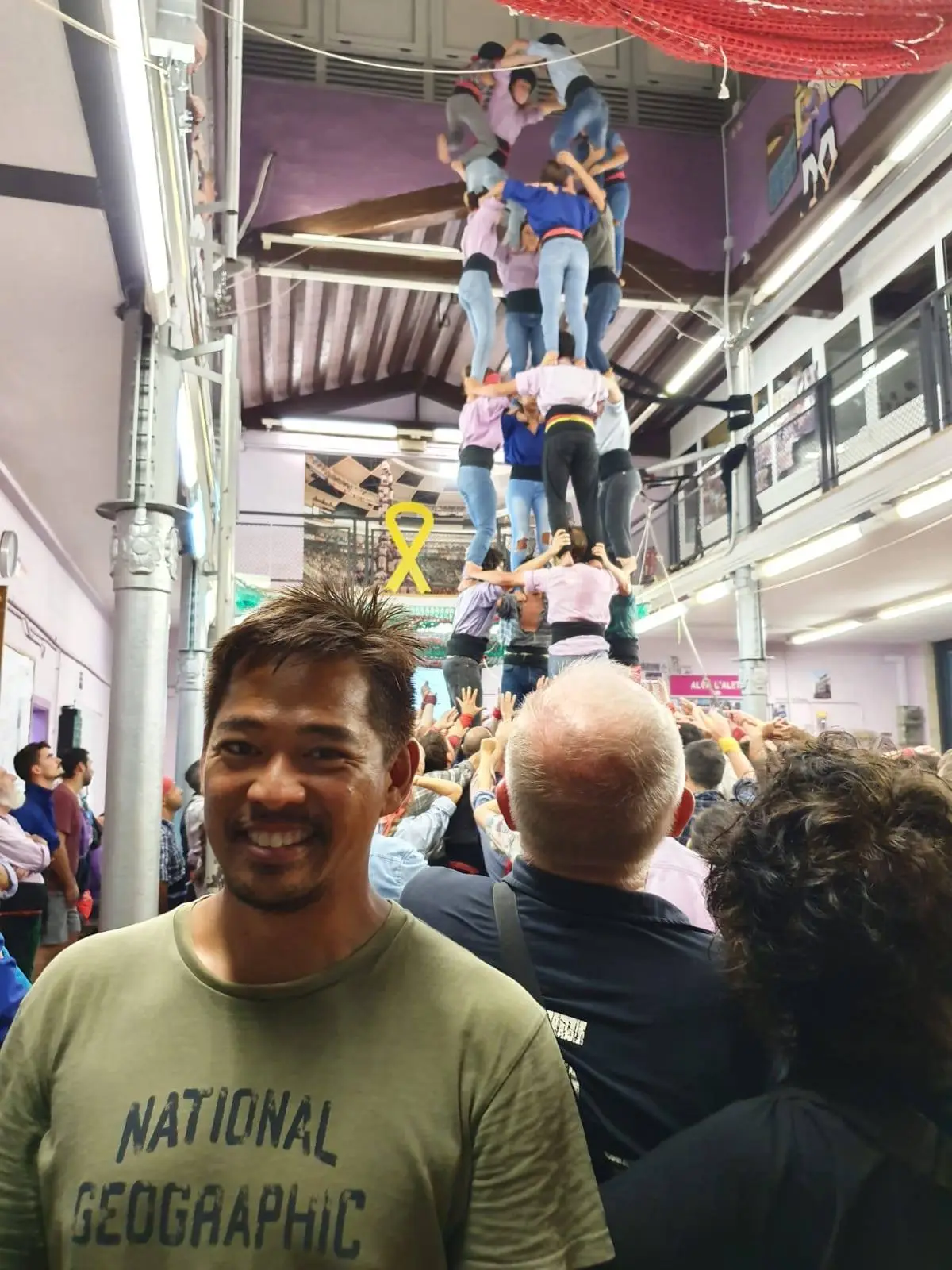
Some people are naturally curious especially when they see that I don’t look like them so they would initiate a question like “Where are you from?”. When I wear my “travel uniform” which is my shirt, trousers and jacket filled with the various patches I got from different places, it becomes a conversation starter. That’s how I met a South African friend while I was visiting Ferrari World in Abu Dhabi as he was intrigued by what I was wearing.
A few months later, I came to visit him in Barberton and he generously drove me around Kruger National Park and had me try beef biltong. I had a similar experience with another South African friend I met at San Pedro de Atacama, Chile. So when I eventually visited Cape Town where she lives, she took me around the city – to a nearby township, to the Clifton and Camps Bay beaches, the Long Street night out, and a place to have braai! Keeping in touch with travelers is quite valuable especially when you get to visit their hometown.
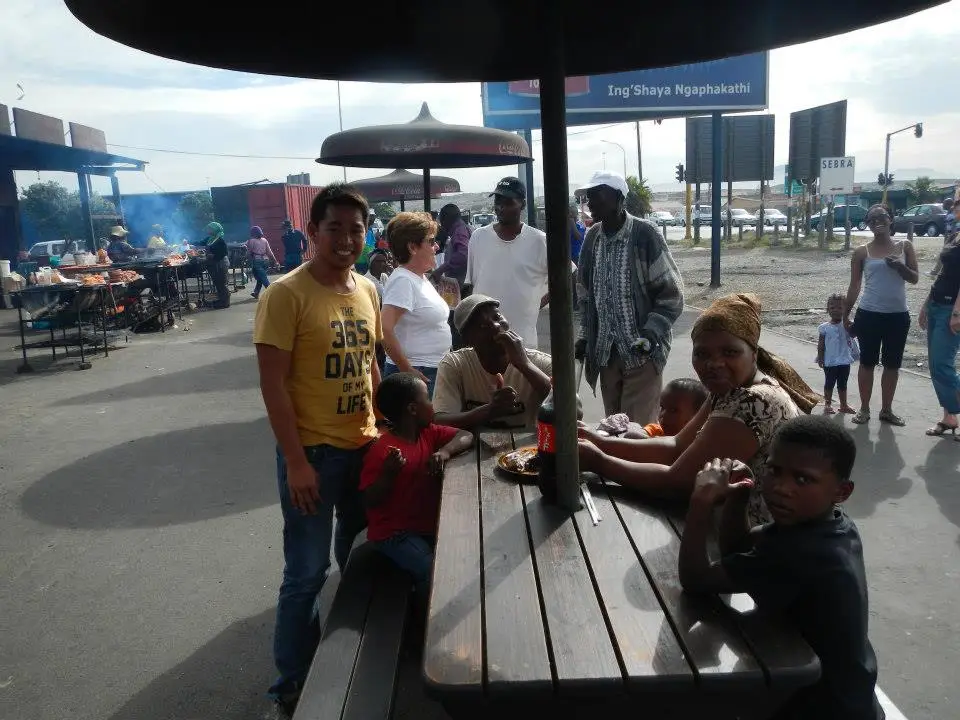
Tell us more about your commitment to the world to create a world of belonging through purposeful travel.
During the global virtual book launch of Galà in September 2021, there was a question from the audience: “Does the book talk about responsible travelling? Have you considered your carbon footprint when travelling to these many countries?”.
Our panel couldn’t give a straight answer as truth be told, the book did not explicitly cover this matter substantially. The question haunted me as I kept thinking about how I could have missed featuring such an important subject in my book. I realized that as an extreme traveller, I was so ignorant about such a relevant subject.
So I spent the next few months educating myself deeper on the topics of carbon neutrality, net zero, and COP26 (which was happening at that time). Regenerative seaweed farming, community energy projects, and plant-based food made more sense to me after having watched the “2040” documentary. I was moved to tears watching National Geographic’s documentary “Before the Flood”, particularly the scene where NASA astronaut Piers Sellers showed the model simulation of climate change as he said: “The facts are undeniable: the ice is melting, the earth is warming, and the sea levels are rising This brought flashbacks during my travels to Funafuti in April 2016, where I incidentally attended the Te Kakeega III, the Tuvalu government’s National Summit on Sustainable Development, where the Prime Minister highlighted that climate change is the most pressing concern of the country.
The country of Kiribati is in the same boat and it’s very sad to imagine the places I visited like Tabon Te Keekee in North Tarawa could be gone in a few decades. I had good memories of the place, especially as I got the chance to see the first president of Kiribati who happened to be there, and I got to hitch a ride back to the city with the former vice president.
The other pressing issue I observed in this country is the lack of drinking water. My local hosts have set up a non-government organization with the vision to provide clean drinking water for the villages in the capital city of South Tarawa, through reverse osmosis desalination powered by renewable sources of energy in the form of solar power. This was an eye opener for me and one that elicited my empathy given people often take clean drinking water for granted in other parts of the world.
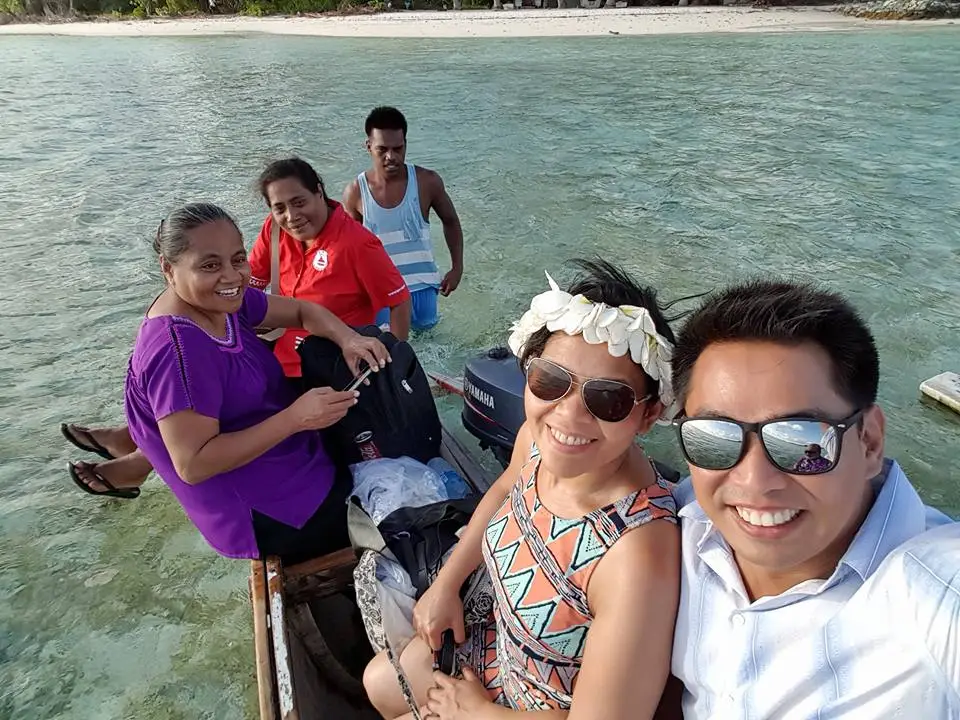
I wanted to be part of the solution and not the issues, so I continued to be in the inquiry on how to make this happen – I just need to know the basics and find the experts who can advise on things that are actionable. When I started to declare this commitment on purposeful travel in 2022, things started happening for me.
I got invited to be a panelist speaker by the Tourism Promotions Board of the Department of Tourism for the Philippine Travel Exchange (PHITEX), the largest government-organized travel trade event in the country. The theme of the event was “Embracing Responsible Tourism – Making better places for people to live in and better places for people to visit,” and I gave a presentation on the value that slow travel generates. In May 2023, I created a purposeful travel video that was presented at the end of the Closing Keynote of the Landmark Conference for Global Transformation.
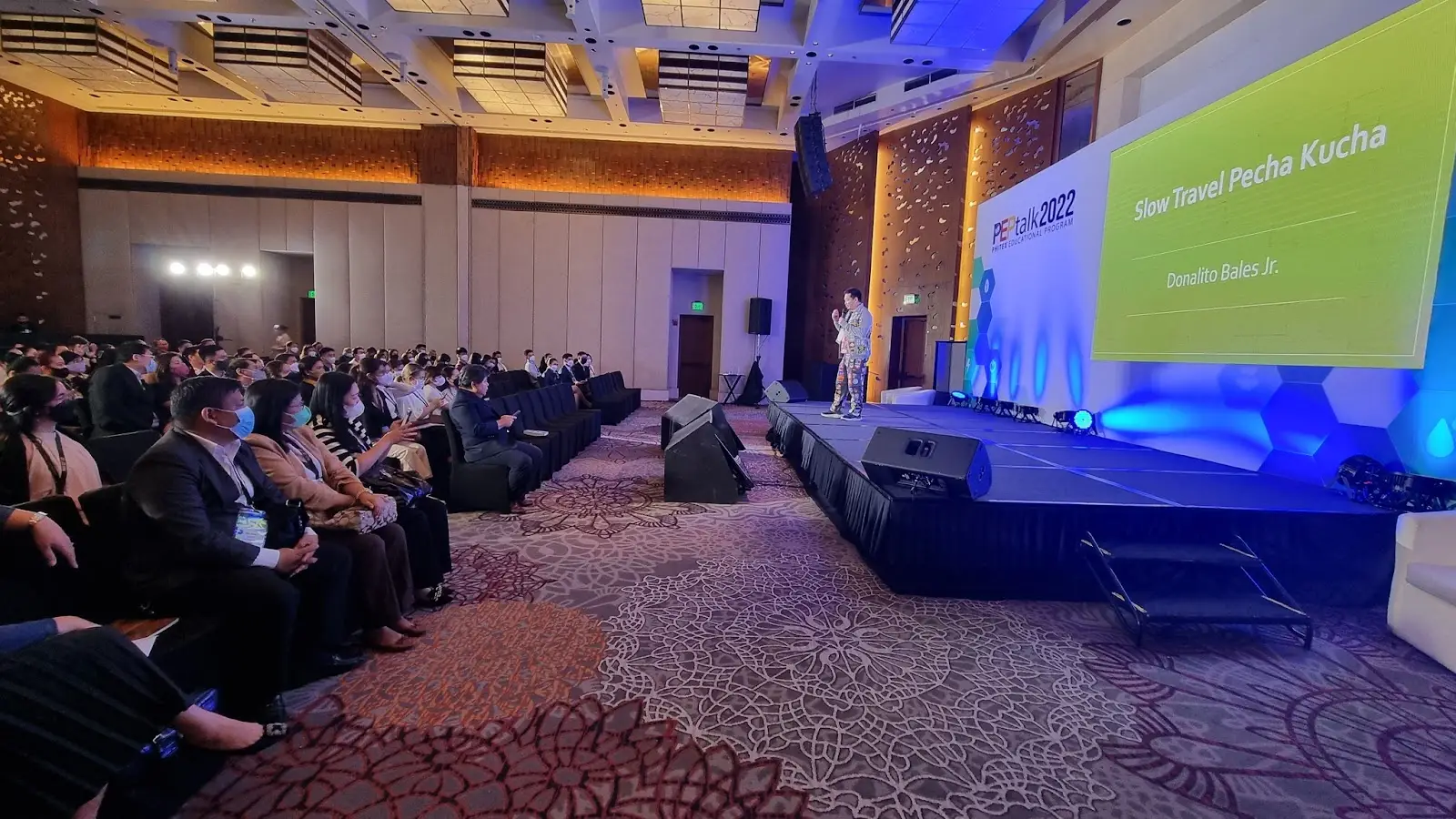
When I was invited to be part of the NomadMania Executive Committee, I saw this as an opportunity to put this commitment on the forefront of our travel community’s consciousness by leading the sustainable travel advocacy initiatives. It is my hope that we move towards NomadMania’s vision to be a leading global community that encourages people to discover the diversity of the world and create a positive impact through travel, as that would be part of the fulfilment to my commitment to the world to create a world of belonging through purposeful travel. A world of belonging is essentially a world that “leaves no one behind”, based on the slogan that anchors the United Nations Sustainable Development Goals.
How have your travels shaped your perspective on different cultures and their values?
Traveling the world opened my mind to what’s possible for humanity. Growing up in a developing country and later migrating to a multicultural first world nation, gave me a lot of perspectives when I traveled having assimilated Eastern culture and Western points of view. I’ve been very fortunate as well to work as an expat in a few countries like living for 2 months in China, a few months in the US, half a year in Japan, and half a year in Papua New Guinea.
This allowed me to immerse myself in the day-to-day living of the people in those places. The more I understood about the cultural context that the people operate in, the more accepting I became around the values of others that are not necessarily similar to mine.
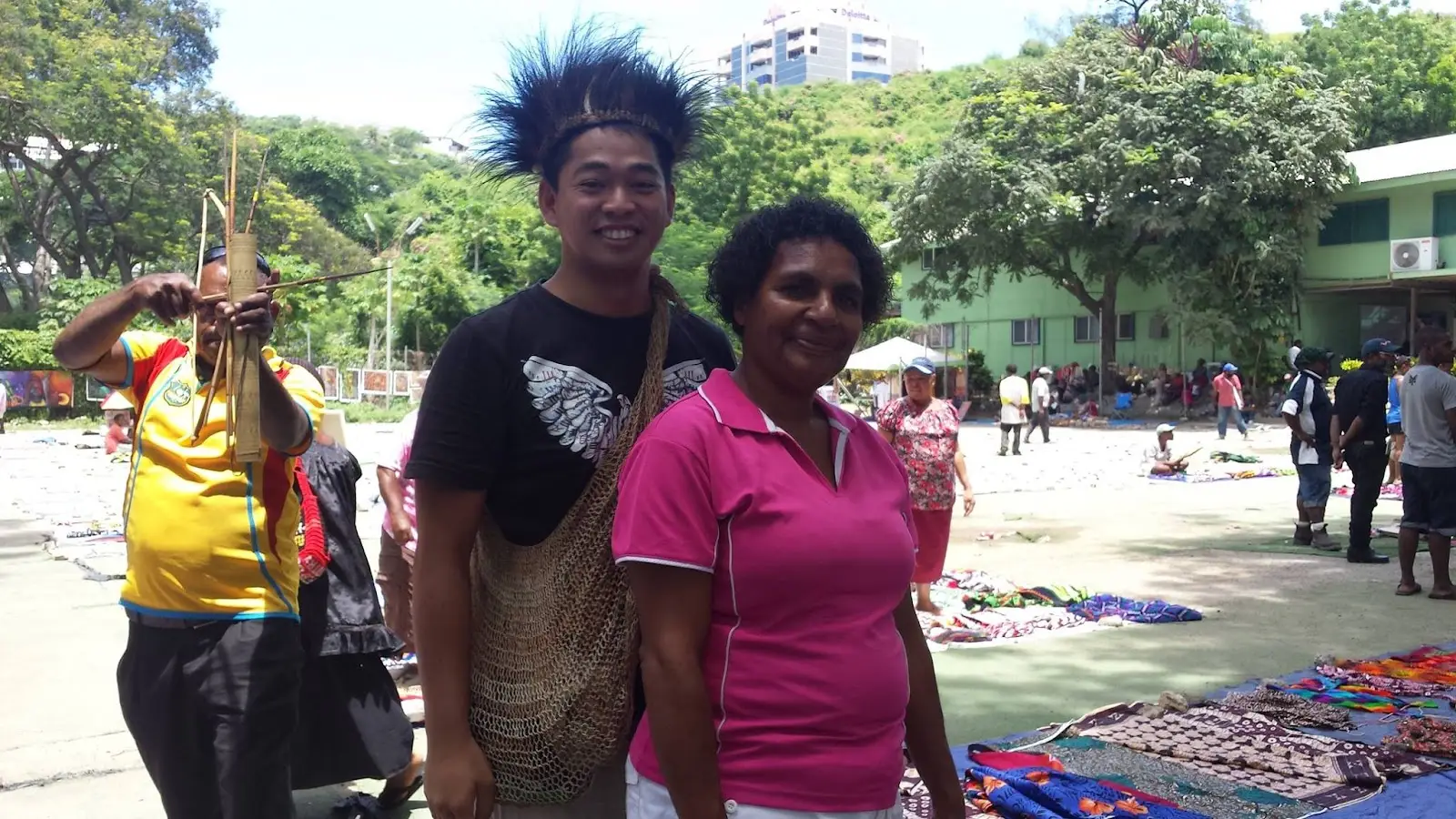
When I travel, I remind myself that my role is to observe and not to judge when I find myself in situations that are unfamiliar to me and my belief system. I became a proponent of cultural relativism which is understanding and respecting that different cultures have their own unique beliefs and practices without judging them based on my own cultural standards. I believe this is an important facet of sustainable and purposeful travel.
I relish those travel memories where I had exotic interactions such as with the Huaorani people in the Amazon jungle, Maasai people in Serengeti, Cholitas of La Paz, Yakel villagers in Tanna island, Rapa Nui natives in Easter island, Mongolian nomads, the Uros people living on floating reed islands in Lake Titicaca, the Yapese people of Micronesia, and the Kayan Long Neck Women of Myanmar.
These diverse encounters gave me glimpses of their way of life which expanded my understanding of how we can all live in solidarity. It reaffirmed my belief in one of the JCI Creed tenets: “that earth’s great treasure lies in human personality.”
Tanna Island, Vanuatu – March 2013
How do you approach responsible and sustainable travel practices?
It’s about making conscious choices on how I’m going to go about my travels in such a way that I minimize the adverse effects on the environment and maximize the positive impact on the communities I visit.
Here are some of the things I’ve shifted in the way I travel where my key principle is to keep it simple and easy to do such that it becomes second-nature:
- I’ve started paying for carbon offset as part of my plane ticket purchase. I also found out about Greenfleet, Australia’s first carbon offset provider which is also a deductible gift recipient organization where all offsets and donations of $2 or more are tax deductible. So I’ve allocated part of my budget for charity donations to paying offsets through this company which in turn would help reduce my income tax.
- I’ve taken into consideration “greener” options when planning for my flights and accommodations since I can make an informed decision based on sustainability-related data provided by the likes of Booking.com and Skyscanner. I’ve also put a preference in flying economy direct, non-stop flights where possible.
- I’ve planned my trips smarter such that I cluster destinations where I can optimise my transport options to get around and cross borders efficiently, and not have to rely on flying many times over.
- I’ve preferred using public transport or carpooling mostly over a hired private vehicle unless I’m on a packaged tour. I believe the best way to get to know a place is still walking around. I’ve also started to embrace slow travel to experience more of a place than simply rushing through it.
- I’ve been more intentional in having authentic interactions with locals than just being a spectator busy taking photos of tourist spots. In 2022, I’ve stayed with local hosts through Couchsurfing in a number of cities in Turkey, as well as in Ukraine, Belarus, Spain, and Timor-Leste back in 2019.
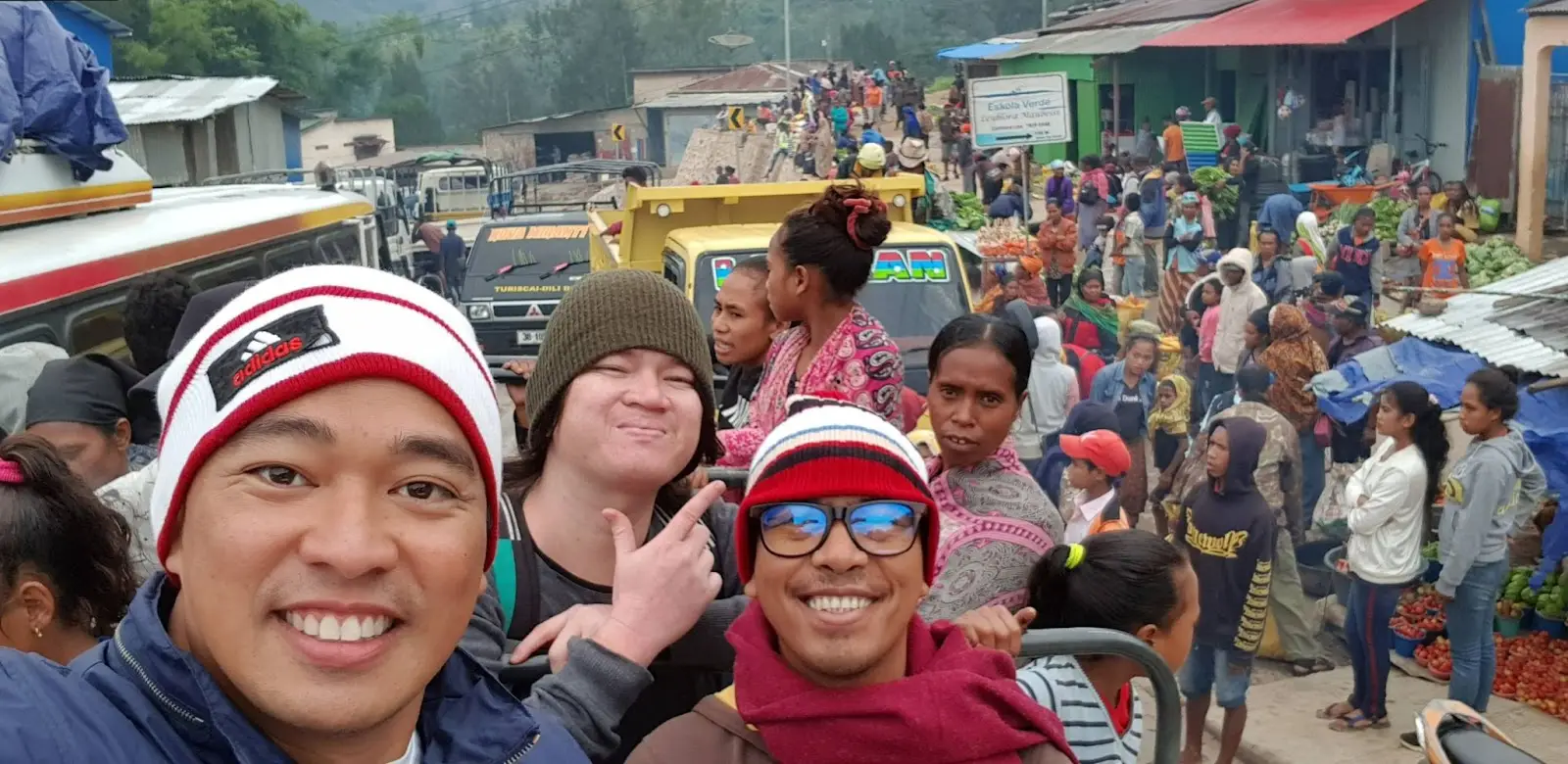
- I was introduced to plant-based food during a trip to Western Australia in 2021 and have gradually added this into my dietary options.
- I’ve brought reusable containers, particularly a water bottle and a tote/sling bag, so I can minimize my reliance on single-use plastic when I’m travelling.
- I’m more discerning around taking part in activities involving wildlife since in previous years, I felt guilty having indulged in riding chained elephants in Phuket and Bali, touching sharks in Caye Caulker or stingrays in Grand Cayman, watching carabaos fighting shows in Carigara, cuddling tigers in Chiang Mai, and wanting to ride an ostrich in South Africa among others.
- I’ve chosen fixers and tour operators whose commitments include reducing environmental impact, supporting local business, and promoting cultural heritage. These were part of my criteria when I selected whom I’m going with for my upcoming trip to the 5 Stans this last quarter of 2023.
- I’ve been more conscious and aware of how my travel giving impacts the community I’m visiting. I’ve previously volunteered while visiting places like Cusco and Phnom Penh. However at that time, I was still naive to what the Center for Responsible Travelcalls out as “unintended consequences from good intentions where misguided contributions can perpetuate cycles of dependency, cause corruption, and burden communities with unwanted or inappropriate donations.”
This 2023, I’m glad I came across the Travel Care Code which encapsulates in a simplified summarised format the sustainable practices that I’ve started to adhere to which I’ve based on common sense and a touch of conscience. I need to continue seeking the latest thought leadership on this matter. I’ve recently watched “The Last Tourist” documentary which is quite an eye-opener.
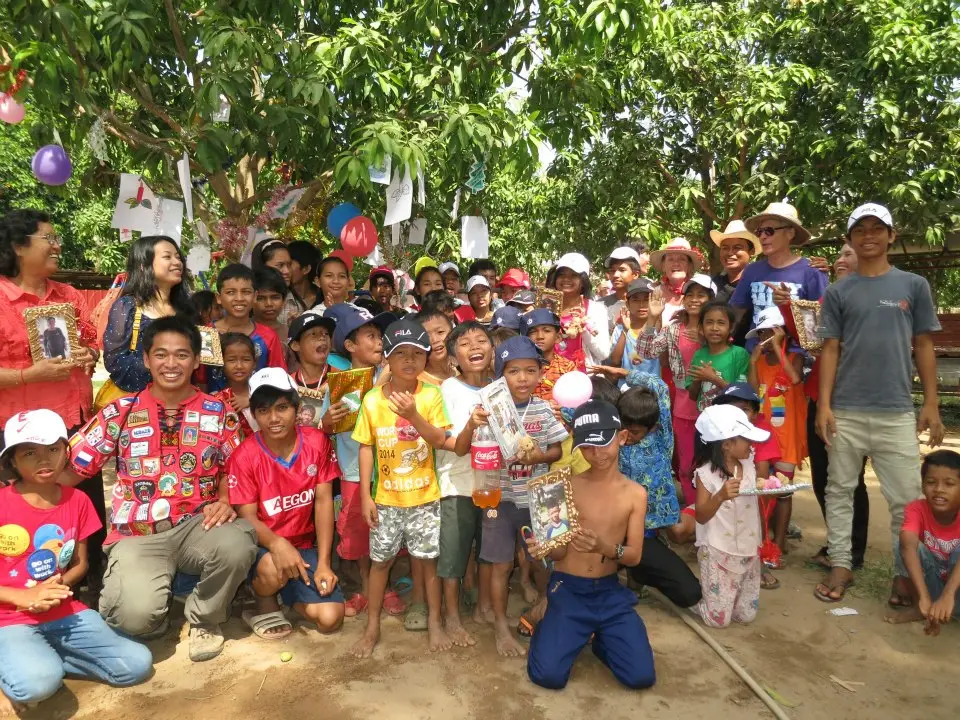
If you can invite any 4 people from any period in human history to dinner who would your guests be and why?
I would invite Jesus Christ, Siddharta Gaturama and Prophet Muhammad. During my world travels, I’ve had the opportunity to visit important places for followers of Christianity, Islam, Buddhism, Judaism, Hinduism, Zoroastrianism, and Baháʼí. I am enthralled whenever I witness strong displays of devotion of the faithful, especially where religion is so much intertwined with the national identity of some of the places I’ve visited. Having a dialogue with my special guests would surely be a great source of enlightenment for me.
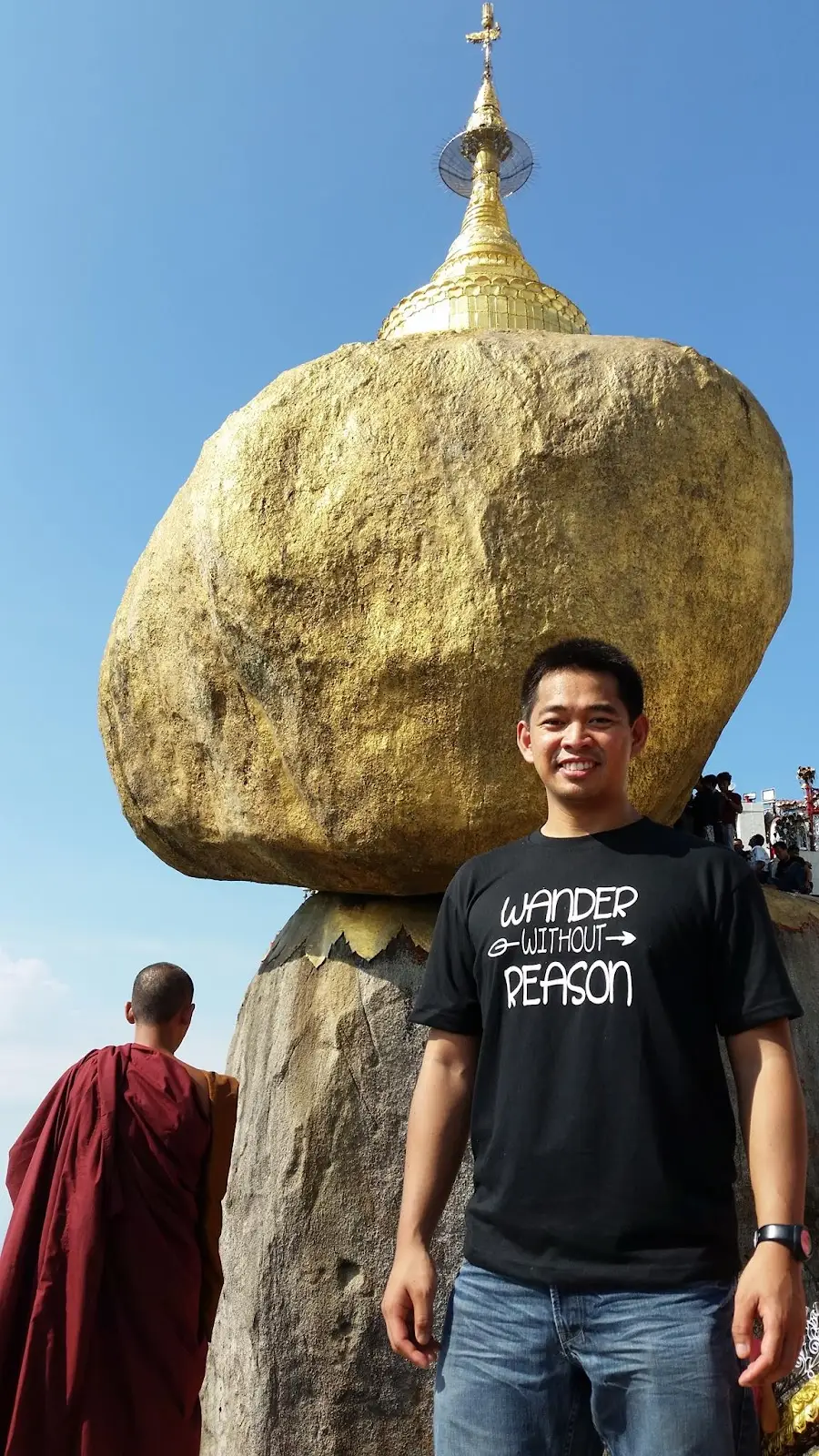
The fourth dinner guest I would like to invite would be my great grandfather, Francisco Reyes, whom I’ve never met and know so little about other than being the father of my father’s mother. I’d like to ask him about what it was like for him to move from Seville, Spain to the Philippines through the galleon trade, as well as how it was like to be the ‘alcalde’ back in the 1920s of my hometown, Tacloban City.
I’ve started researching the family tree and one of the most intriguing items I came across is the legend that his ancestors were Spanish prince brothers whose aunt or grand aunt was Queen Isabela! This would definitely be an interesting dinner conversation topic.
